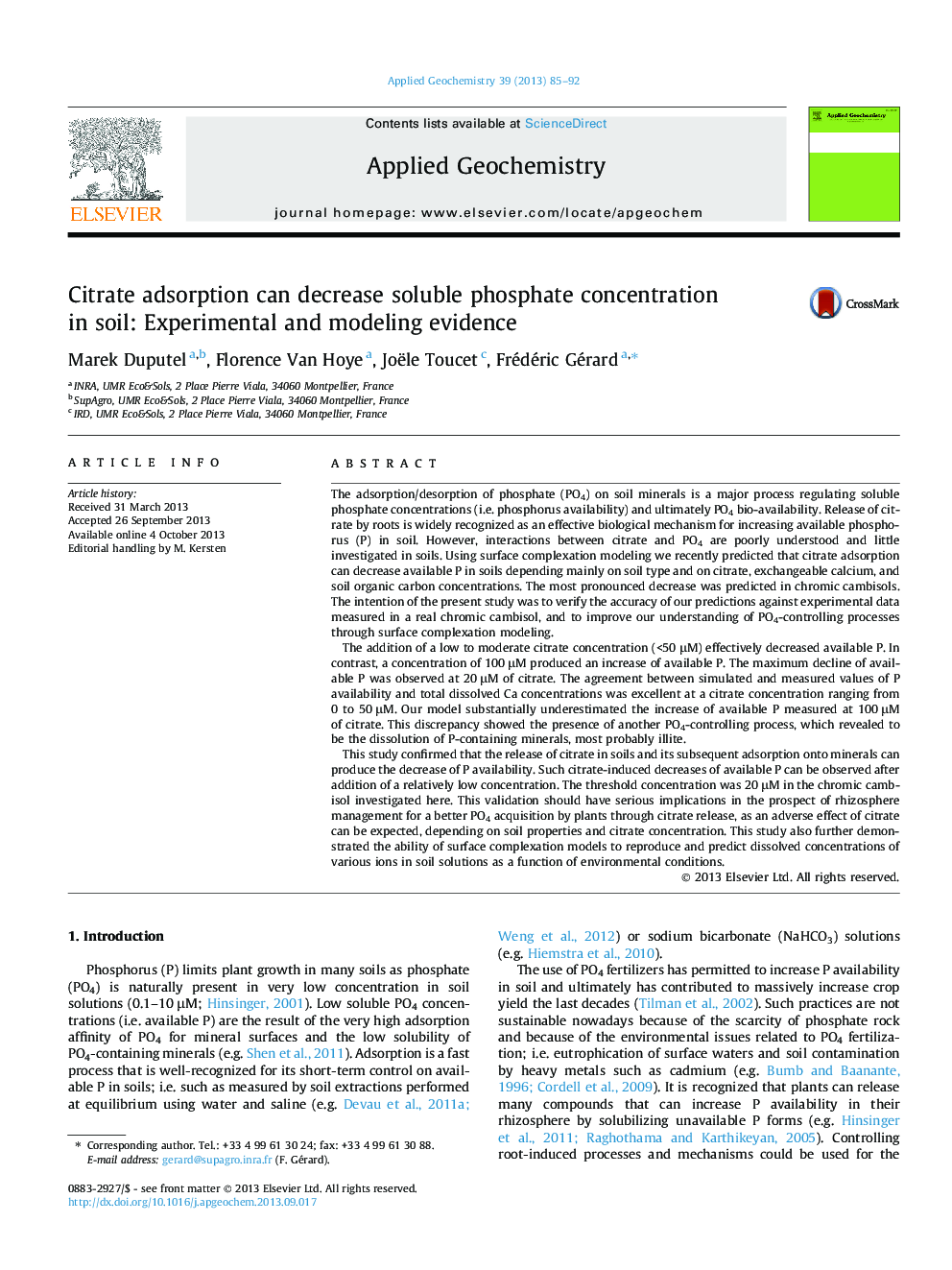| Article ID | Journal | Published Year | Pages | File Type |
|---|---|---|---|---|
| 4435892 | Applied Geochemistry | 2013 | 8 Pages |
•We experimentally demonstrated that citrate can decrease P availability.•A decrease was observed in chromic cambisol below a concentration of 50 μM.•We correctly modeled P availability as well as total dissolved Ca concentrations.•Our model showed that P-containing minerals dissolved at a concentration of 100 μM.•Illite probably dissolved and released adsorbed PO4.
The adsorption/desorption of phosphate (PO4) on soil minerals is a major process regulating soluble phosphate concentrations (i.e. phosphorus availability) and ultimately PO4 bio-availability. Release of citrate by roots is widely recognized as an effective biological mechanism for increasing available phosphorus (P) in soil. However, interactions between citrate and PO4 are poorly understood and little investigated in soils. Using surface complexation modeling we recently predicted that citrate adsorption can decrease available P in soils depending mainly on soil type and on citrate, exchangeable calcium, and soil organic carbon concentrations. The most pronounced decrease was predicted in chromic cambisols. The intention of the present study was to verify the accuracy of our predictions against experimental data measured in a real chromic cambisol, and to improve our understanding of PO4-controlling processes through surface complexation modeling.The addition of a low to moderate citrate concentration (<50 μM) effectively decreased available P. In contrast, a concentration of 100 μM produced an increase of available P. The maximum decline of available P was observed at 20 μM of citrate. The agreement between simulated and measured values of P availability and total dissolved Ca concentrations was excellent at a citrate concentration ranging from 0 to 50 μM. Our model substantially underestimated the increase of available P measured at 100 μM of citrate. This discrepancy showed the presence of another PO4-controlling process, which revealed to be the dissolution of P-containing minerals, most probably illite.This study confirmed that the release of citrate in soils and its subsequent adsorption onto minerals can produce the decrease of P availability. Such citrate-induced decreases of available P can be observed after addition of a relatively low concentration. The threshold concentration was 20 μM in the chromic cambisol investigated here. This validation should have serious implications in the prospect of rhizosphere management for a better PO4 acquisition by plants through citrate release, as an adverse effect of citrate can be expected, depending on soil properties and citrate concentration. This study also further demonstrated the ability of surface complexation models to reproduce and predict dissolved concentrations of various ions in soil solutions as a function of environmental conditions.
